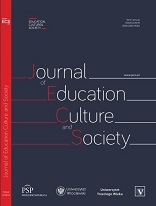Exploring Gender and Caste Intersectionality among Muslims: A Sociological Study
Exploring Gender and Caste Intersectionality among Muslims: A Sociological Study
Author(s): Rabiya Yaseen Bazaz, Mohammad AkramSubject(s): Social Sciences, Gender Studies, Sociology, Studies in violence and power
Published by: Fundacja Pro Scientia Publica
Keywords: Gender;Caste;Education;Employment;Patriarchy;
Summary/Abstract: Caste studies conducted among Muslims in India generally focus on establishing the existence of caste system among Muslims but they seldom talk about different types of oppression and inequalities faced byMuslim women.This empirical study exploreshow gender and caste identities and their mutual intersectionality impact education,occupation and income choices and actual attainments of Muslim women.This study is part of a larger study conducted among Muslims of Kashmir in India.Primary datawas collected from 704 eligible respondents (Male=392, Female=312) using mixed methods. Three layers of ‘caste like’ and ‘caste’ groups existing in the research area are identified and gender situation within these groups are comparatively examined.Each of the ‘caste like’ and ‘caste’ groupshas patriarchal caste capital.Higher professions within the government and private services are largely acquired by upper caste male Muslims or other male and female Muslims having rich cultural and social capital. There is preponderance of lower caste male Muslims in low income self-employment but lower caste Muslim females seldom find say in family based business and compelled to join low paid private jobs. More than fifty percent educated Muslim females are unemployed.Although patriarchy is the general rule here, not all women face discrimination and inequality in the same way. Upper caste Muslim women often witness so called benevolent restriction of choices whereas lower caste women are the most excluded and marginalised section of the society who face double discrimination due to patriarchy and interwoven caste positions which severely impacts their educational as well as employment choices and attainments.
Journal: The Journal of Education, Culture, and Society
- Issue Year: 12/2021
- Issue No: 2
- Page Range: 190-210
- Page Count: 21
- Language: English

